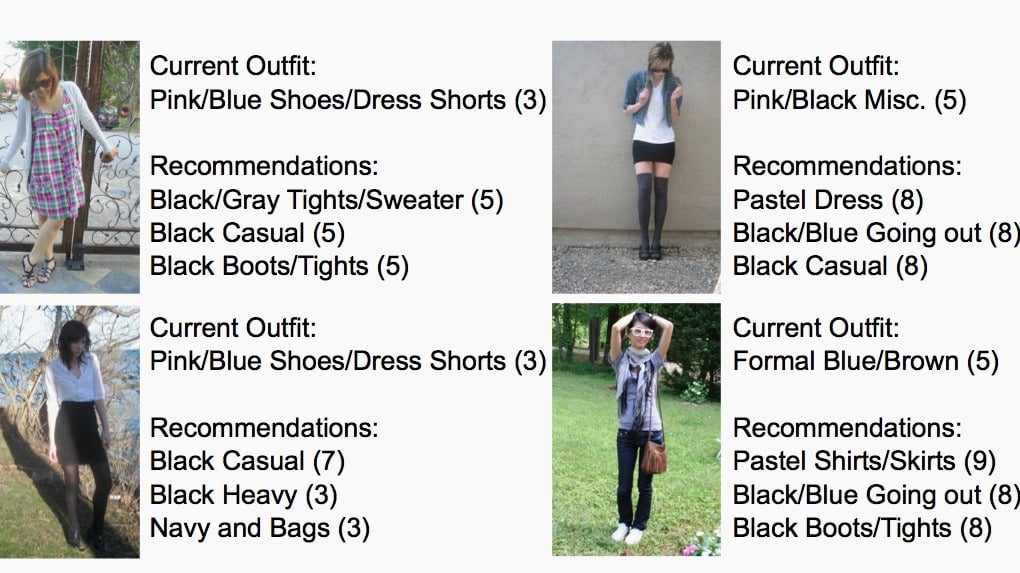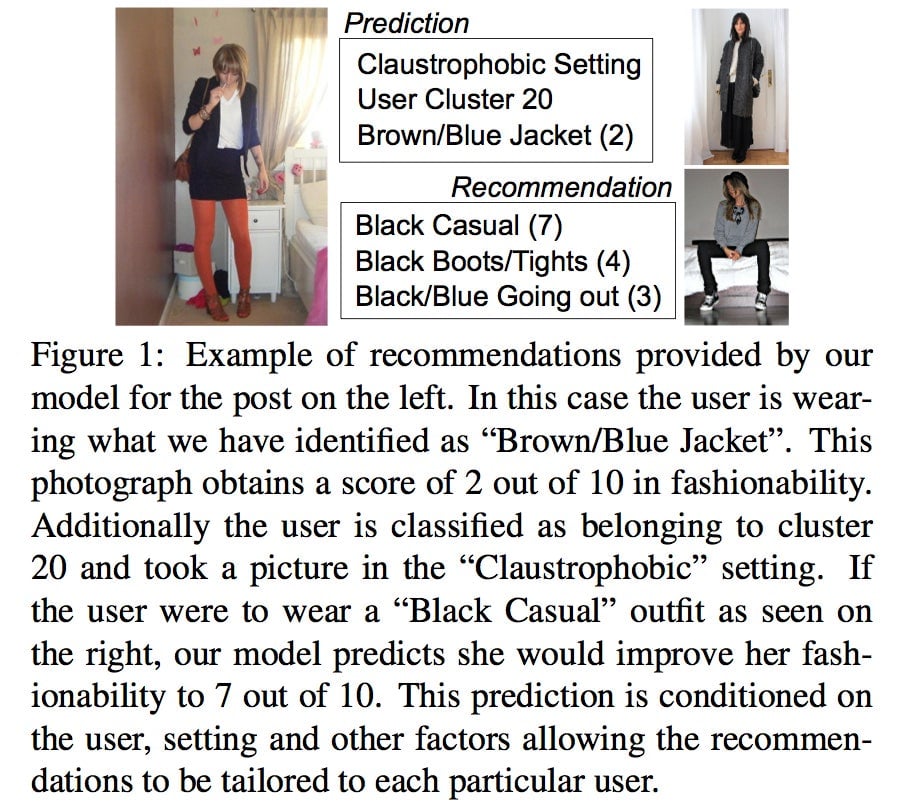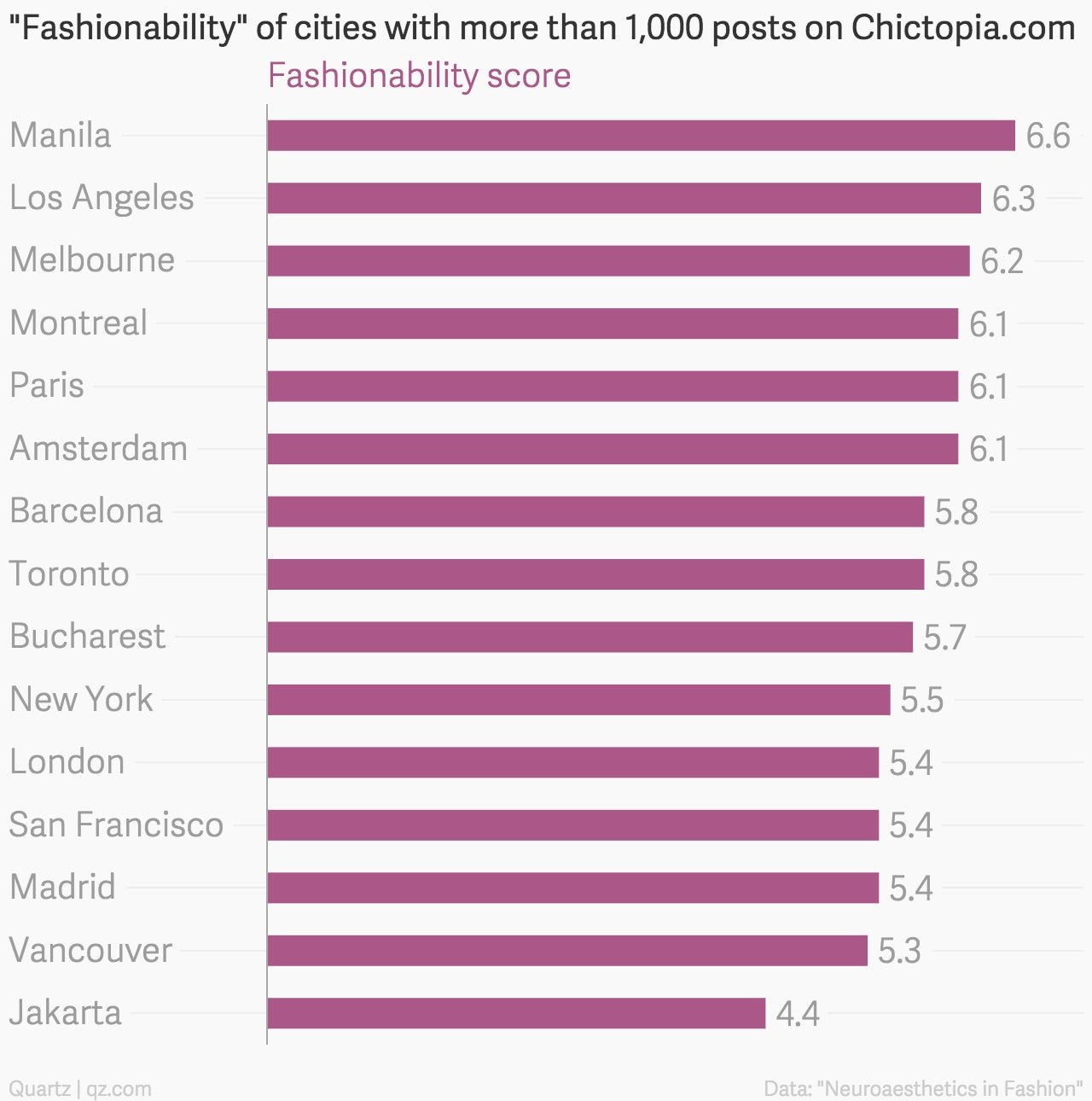Computer scientists developed an algorithm that can show you how to be fashionable
Style is a tricky business. Clothes come in a limitless arrangement of shapes and colors that many of us try daily to assemble into something others will find fashionable. All too often we don’t exactly get it right, or at least leave room for improvement. A team of computer scientists is working to help.


Style is a tricky business. Clothes come in a limitless arrangement of shapes and colors that many of us try daily to assemble into something others will find fashionable. All too often we don’t exactly get it right, or at least leave room for improvement. A team of computer scientists is working to help.
Computer scientists Raquel Urtasun and Sanja Fidler, along with several colleagues in Spain, created an algorithm, outlined in this paper (pdf) they presented at a recent conference on computer vision and pattern recognition, which can evaluate a picture of an outfit and recommend ways to make it better. It does so by visually parsing the image, focusing on the clothes themselves but also analyzing what they call the “type of outfit,” the appearance of the wearer, and the setting of the photograph, as well as metadata such as which country and city the person is in. The algorithm can then suggest ways to improve the outfit, based on what the public has previously deemed fashionable in a similar situation.

In this case, the public whose fashion expertise, or opinions at any rate, the authors drew on to tell the good from the bad was the selfie-posting community on website chictopia.com. The authors acknowledge that individual fashion preferences often vary by nationality, gender, and of course, taste. The popular site offered a kind of proxy, however, for what people generally consider fashionable. On it, people from around the world post photos of their looks with information about what they’re wearing. Other users can show their approval through “votes,” which are analogous to “likes” on other sites, and comments. The team collected 144,169 posts and analyzed them to figure out what elicits approval in an image and what doesn’t.
“Our aim here is to give a rich feedback to the user: not only whether the photograph is appealing or not, but also to make suggestions of what clothing or even the scenery the user could change in order to improve her/his look,” the authors write.
Beyond just telling people how to improve their outfits, they’ve basically built a tool to create the ultimate fashion selfie. And it’s one more step in our attempts to quantify the world with computers—there’s also an algorithm for judging creativity in art, for instance.
Interestingly, the data they collected also allowed them to rank which cities on the site have the most fashionable users. Manila topped the list.

Chictopia offers a fairly limited set of users—almost exclusively young women, with some young men thrown in. The team, as New Scientist notes, intends to find other sources to refine its results.
The algorithm, in addition to helping sartorially challenged individuals, could have more commercial applications. It could be used in trend analysis, for instance, not just by individuals but by fashion companies as well.